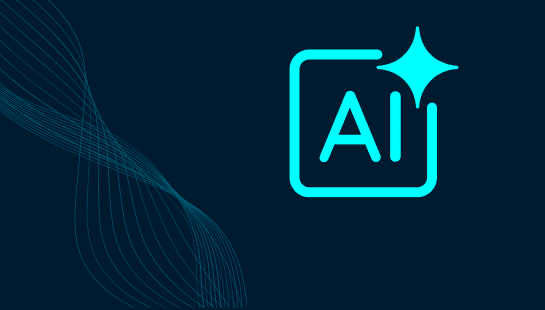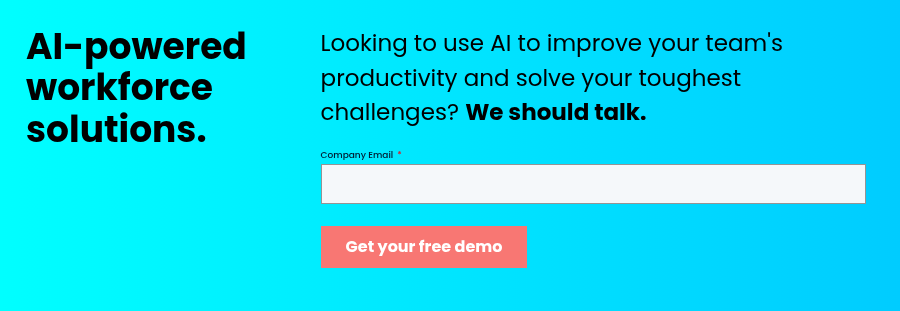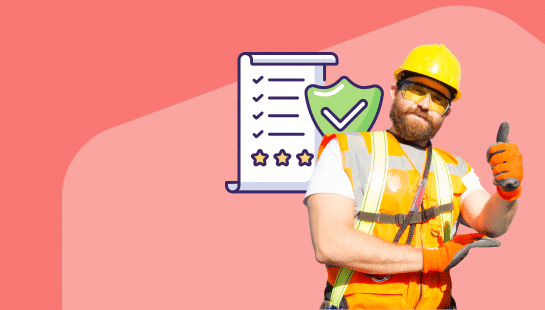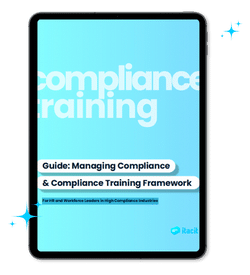AI’s role in employee training has revolutionized a massive $350 billion global industry. You might have noticed AI taking a bigger role in workplace learning lately. This isn’t just another tech buzzword – the results speak for themselves. Companies that use AI in their training programs see a 31% jump in employee satisfaction.
L&D teams just need AI right now. The LinkedIn Workplace Learning Report 2023 highlights that 89% of L&D experts believe employee skill preparation helps tackle faster changing work demands. Workers expect training from their employers – 84% of them to be exact. AI steps in to close this gap with data analysis, tailored content, and automation.
The business case for AI in corporate training grows stronger each day. Forrester’s State of AI Survey 2024 reveals something interesting – two-thirds of companies would call their AI investments successful with nowhere near 50% ROI. AI has cut training time by 40% and delivers more relevant content to employees. The global AI market will hit $1.8 trillion by 2030. Your company can’t risk missing out on these advantages.
This piece lays out practical ways to add AI to your employee training. You’ll find everything from tailored learning paths to up-to-the-minute data analysis. We’ll help you tackle common challenges and pick the right platform that fits your team’s unique needs.
The shift from traditional to AI-powered training
Traditional corporate training is falling apart. Nearly half of employees find it boring, and more than a third say their companies don’t deliver training in an interesting way. This problem costs money. Companies spend around USD 1286 per employee annually on training, yet employees forget 50% of regular content within an hour and 90% within a week.
Why traditional training methods fall short
Today’s ever-changing world makes conventional training’s limits clear. Companies and employees face these major hurdles:
- Poor engagement: 47% of employees don’t have enough time to complete training programs, which leads to stress and burnout
- Lack of personalization: Regular training uses the same approach for everyone, which doesn’t work for many people
- Limited practice opportunities: Students get only 20-30 minutes of actual practice during a typical 8-hour session
- Minimal relevance: 36% of employees say their company’s programs lack real-life application
- High costs with poor results: Companies invest heavily, yet only one-fourth of employees see improved performance
Nobody wins in this situation. Companies waste money on programs that don’t work, and employees can’t learn what they need.
The rise of digital learning expectations
Learning preferences have changed among today’s workers. They want flexible schedules, customized training, and learning time during work hours. Digital learning has exploded – 90% of corporations now use it, up from just 4% in 1995.
Work has changed too. Workers feel tired (74%) and exhausted from their workloads (34%). They need training that fits their schedule and helps right away.
Digital learning gives people this flexibility. HR leaders believe digital learning works just as well as in-person classes, with 61% rating it highly. About 80% of employees say available educational resources help them feel more involved at work.
Employees want training they can use right away. “Rapid learning transfer” lets workers use new skills immediately instead of waiting to apply theory. This helps both workers and organizations.
How AI is changing the game for HR leaders
AI has become essential to HR strategies. HR leaders planning or using generative AI jumped from 19% in June 2023 to 61% by January 2025. This shows how AI can reshape HR.
AI fixes many old training problems. Employee satisfaction increases by 31% when organizations use AI in training. AI looks at employee data to find knowledge gaps and strengths, which creates customized learning paths.
AI platforms adapt as employees learn, unlike traditional content. Students who struggle get extra help, while high performers see more challenging material. This makes learning better and more interesting.
AI helps predict what skills companies will need, which lets businesses keep up with trends. Learning Management Systems use AI to match training content to each worker – perfect for skilled workforce training where personal attention matters most.
AI brings big improvements in efficiency. It answers routine questions, gives quick feedback, and maintains quality no matter when or where training happens. HR leaders need to develop talent quickly, so these benefits make AI very attractive.
Personalized learning paths with AI
AI has revolutionized workplace education through personalized learning. Modern AI systems now customize learning experiences to suit each employee’s unique needs. This marks a radical change from traditional approaches that treated everyone the same way.
How AI identifies individual skill gaps
AI systems collect data from various sources to create detailed skill profiles of employees. These tools examine performance metrics, past learning activities, and career aspirations to determine specific training requirements.
To name just one example, Johnson & Johnson works with 4,000 technologists to identify 41 specific “future-ready” skills grouped into 11 capabilities. Their process has three main steps:
- They create a skills taxonomy that defines required competencies
- They gather skills evidence from HR systems, learning platforms, and project data
- They use large language models to measure proficiency on a 0-5 scale
The results speak for themselves. Their AI-driven skills analysis boosted professional development participation by 20%, and 90% of technologists now use the learning platform. Companies can create heat maps that show skill levels by region and business unit. This helps leaders make informed workforce decisions.
Real-time content adaptation
AI does more than spot gaps, it adjusts content as employees learn. Unlike traditional courses, AI-powered training responds to learning patterns automatically.
The system provides extra resources or different explanations when employees find concepts difficult. It introduces harder material for high performers to keep them interested. This smart approach prevents learners from feeling stuck or bored.
AI works quietly in the background to analyze how people interact with the content. Every click, response, and minute spent on materials helps algorithms fine-tune the experience. The result? Training modules evolve naturally with employee progress.
Boosting engagement through relevance
Personalized learning makes a big difference in how employees participate. AI-powered personalization can boost employee engagement by up to 60%, which makes training much more effective.
Employees respond better because the content matters to them personally. They get recommendations that match their roles and career goals instead of generic materials. One global specialty materials company saw operational efficiency improve by 15% and productivity rise by 20% after using AI-enhanced learning.
Research backs these benefits. A Journal of Educational Computing Research study found that students learned 30% more and finished courses 25% faster with adaptive systems. A Gallup survey revealed that 45% of employees would spend more time learning if programs matched their needs.
Learning platforms use these findings to create engaging experiences. This matters especially for skilled workforce training where personal attention counts most.
AI teaching assistants and virtual coaches
AI teaching assistants have become vital tools in modern employee development programs. These digital helpers give on-demand support and guidance that changes how teams learn new skills.
What are AI teaching assistants?
AI teaching assistants serve as digital tools that support employees throughout their learning trip. They act as virtual mentors ready to help workers whenever needed. These assistants do more than static learning resources – they respond to questions, offer customized guidance, and help direct training materials.
These tools have grown beyond simple chatbots. Modern AI assistants look at each employee’s current skills and career goals to create tailored training plans. They adapt based on progress and recommend courses in cybersecurity, AI, and data analytics. This forward-thinking approach helps companies fix skill gaps before they become real issues.
The technology works among traditional learning platforms instead of replacing them. A federal government agency found that AI-powered workforce development programs boost digital skills across departments. The system adapts to individual needs while keeping track of what the organization requires.
Supporting learners with up-to-the-minute help
AI teaching assistants shine because they’re always available. They offer support 24/7, which means no more waiting for answers. This round-the-clock access helps especially when you have to:
- Ask questions about content
- Clear up confusing concepts
- Direct complex training resources
- Get encouragement during tough modules
Quick help keeps employees involved and progressing. 87% of users report AI Digital Assistants make finding answers easier than before. Questions get answered right away, so learning continues smoothly.
iTacit’s AI-powered HR Assistant shows this approach in action. The system puts company policies, SOPs, and training documents at employees’ fingertips. Staff can ask questions and get instant, role-specific answers from the organization’s knowledge base. This quick access creates a space where learning happens naturally during the workday.
These assistants do more than give simple answers – they provide dynamic, customized training at scale. They create learning paths that fit each trainee’s needs and offer conversational support. Some platforms even let employees practice skills in simulated workplace scenarios before using them in real-life situations.

Reducing trainer workload and improving consistency
Organizations using AI tools help trainers save about 5.9 hours each week, almost six extra weeks yearly. Learning professionals can now focus on important tasks instead of repetitive work.
Management teams save 4.5 hours weekly they used to spend answering employee questions. The time savings come from:
- Automated responses to common questions
- Quick access to training materials
- No manual document searches
- More strategic focus for HR professionals
AI-powered assistants make training more consistent. They give everyone the same high-quality coaching without expensive live 1:1 sessions. This consistency keeps similar standards while maintaining global coordination.
AI coaches provide informed insights unavailable in traditional training. Each simulation creates measurable data linked to business KPIs. Organizations can track learner progress with clear, role-specific metrics and connect training to business results.
HR leaders find surprising benefits in new insights. About 93% of HR users were surprised by their employees’ search patterns. These findings help learning teams spot knowledge gaps they might miss, leading to smarter training investments.
Predictive analytics for future skill needs
AI proves its real worth to HR leaders by predicting what the workforce will need down the road. AI doesn’t just fix current skill gaps – it spots what your team will need before these gaps become serious problems.
Using AI to forecast training requirements
AI-powered predictive analytics has changed the way organizations develop their employees. AI systems can spot patterns that humans might miss by analyzing historical and current data. These platforms look at performance metrics, industry trends, and workforce changes to predict which skills your team needs next.
The numbers tell a compelling story – more than 80% of business leaders say they have less than 18 months to put an AI strategy in place before facing negative effects. But just adding AI without a clear goal often fails. Research shows over 80% of AI projects have failed or will fail soon.
Predictive analytics stands out from regular planning because it updates forecasts as new data comes in. This creates a flexible roadmap for training instead of rigid plans that become outdated quickly.
AI looks at employee performance data in unique ways. The system can suggest targeted training when someone struggles with specific tasks before these challenges hurt productivity. McKinsey research points out that up to 30% of hours worked across the US economy could be automated by 2030, and 12 million workers will need to switch occupations by then.
Examples from IBM and Deloitte
Major organizations already make use of predictive analytics to guide their training strategies. IBM uses AI to analyze workforce data and create accurate AI-guided workforce plans based on changes in employee development, location, pay, and retention rates. Their system spots areas where staff lack skills and suggests relevant courses.
IBM takes a practical approach. Their AI checks how business goals match current capabilities and creates gap analyzes that shape strategic planning. This links training directly to business needs rather than keeping it separate.
Deloitte does things a bit differently. They use predictive analytics to spot potential skill needs across sectors. They combine this with performance measurements to keep human capital ready for future challenges.
The sort of thing I love about Deloitte’s work is how they study human-machine teamwork in the workplace. Their survey of over 11,000 workers across 17 countries revealed key insights about combining AI with human capital. They found that two-thirds of hiring managers think entry-level workers come in unprepared, mainly due to lack of experience.
Aligning training with business goals
Predictive analytics connects employee growth directly to company goals. AI systems analyze how specific skills contribute to business results, letting HR leaders invest in training that makes the biggest difference.
The best AI implementations start with clear business targets. Ask yourself: “What are we trying to achieve with AI, and how is AI better suited to accomplish those goals than other technologies?”. If you want to cut maintenance costs, AI can predict when equipment needs repairs by analyzing performance patterns.
Companies that use AI in their daily operations, not just for skills training, do 44% better in areas like keeping employees and growing revenue. This approach ties training to business processes instead of treating it as a standalone activity.
Here are practical steps to implement predictive analytics:
- Pick specific business problems AI can solve
- Show how AI fits into current workflows
- Set measurable success goals
- Keep communication channels open during implementation
Your AI training programs then become strategic business investments instead of just HR initiatives. The World Economic Forum predicts that while 85 million jobs might disappear globally soon, new technologies could create 97 million new positions. Predictive analytics helps your organization get ready for this big transformation.
Interactive simulations and gamified learning
Simulations and gamified learning lead the way in innovative technology for employee training. These interactive methods transform passive learning into active skill-building experiences that employees enjoy.
How AI and VR create immersive training
VR and AI work together to build training environments that feel real. These technologies copy actual workplace scenarios where employees practice complex skills right in the training room. Healthcare professionals use VR simulations to practice surgical techniques and critical care scenarios on virtual patients. Retail employees can experience customer interactions or Black Friday crowds through VR before they face real stores.
AI powers these simulations by creating unpredictable, emotional conversations that mirror workplace challenges. Employees build confidence as they handle difficult situations they’ll face at work. The simulations adapt based on individual performance, which makes each training session relevant.
Numbers tell the story – AI-driven VR training works 76% better than traditional methods. Walmart saw amazing results after they started VR training: employee involvement went up 10% and staff turnover dropped 20%. Cleveland Clinic’s story is a big deal as it means that they cut their onboarding time from 18 months to 9 months through VR.
Benefits of hands-on, risk-free practice
Simulations shine because they create safe spaces to learn. Employees can:
- Practice high-stakes procedures without patient risk
- Try different approaches to find what works best
- Build muscle memory through repetition
- Learn from mistakes without potential risks
Medical professionals can perform procedures like intubation or defibrillation many times until they master them. Leadership trainees test their decision-making skills through scenario-based games and get feedback on their choices.
Simulations boost confidence beyond just building skills. Research shows employee confidence jumps 275% after VR training. Teams need half the manual training time with simulation tools, and satisfaction rates top 94%. Job performance improves by 30% on key metrics.
Real-time feedback in simulated environments
AI’s immediate feedback loop marks the biggest leap over traditional training. AI studies every aspect of performance and gives instant guidance during simulations. This quick coaching helps learners adjust right away, which creates powerful learning moments.
AI compares learners against defined best practices and shows both wins and areas to improve. Surgical trainees might get feedback on their technique precision. Sales representatives could learn about their communication effectiveness or how well they apply product knowledge.
Learning Management Systems include these advanced simulation features. Workers get hands-on practice with immediate feedback. The platform helps skilled workers learn complex procedures through role-specific practice scenarios.
This approach works because it blends multiple learning modes at once. Employees see the environment, hear instructions, and use natural gestures in well-designed VR simulations. This multi-sensory involvement boosts retention rates better than passive methods.
Game elements like badges, levels, and leaderboards add excitement to training. These features tap into our competitive nature and motivate continued participation while showing clear progress.
AI-powered learning analytics and reporting
AI has turned learning analytics from simple completion tracking into a powerful business tool. Today’s AI systems convert raw training data into practical insights that help improve training continuously.
Tracking learner progress and outcomes
Simple completion reports are now outdated. AI-powered analytics creates detailed learner profiles by analyzing multiple data streams at once. These systems track not just what employees complete, but how they work with materials, their strong points, and areas where they struggle.
AI goes beyond tracking past learning to predict future needs. By comparing role requirements with behavior data and performance patterns, learning teams can now:
- Focus upskilling on crucial areas
- Spot hidden talents
- Arrange training with business goals
This change from looking back to looking ahead helps companies prepare for future skill needs. Johnson & Johnson shows this through their skills assessment process. They use large language models to review technologist skills across 41 future-ready areas. Their results showed a 20% boost in professional development participation, and 90% of technologists used their learning platform.
Identifying content gaps and improvement areas
AI spots patterns that people often miss. These systems constantly watch learner behavior and quickly flag content that confuses or fails to interest learners.
AI finds broader gaps throughout your curriculum. For instance, generative AI can read company discussion boards to find common questions that point to topics needing more training. Learning teams can then create focused mini-modules within days instead of months.
AI’s real strength lies in completing the feedback cycle. When analytics show that learners struggle with a concept, the system adjusts teaching methods or suggests different approaches automatically.
Demonstrating ROI to stakeholders
Learning teams often struggle to prove training’s value. AI makes this easier by linking learning metrics to business results. Instead of basic completion numbers, AI analytics deliver real results by:
- Finding skill gaps and customizing training
- Measuring performance to gage success
- Connecting training data with business results
Walmart’s results after adding AI-powered learning tools to their tech training showed clear improvements in employee performance and customer satisfaction.
To measure your ROI, watch these key metrics:
- Time-to-skill (speed of reaching proficiency)
- Quality of engagement (how deeply learners interact)
- Knowledge retention at 30, 60, and 90 days
- Performance gains linked to training
AI helps show financial returns clearly. Using the formula: ROI (%) = (Monetary Benefit − Cost of Training) / Cost of Training × 100, teams can calculate training value. This gives stakeholders solid proof of results, as AI-enhanced training programs cut time-to-competency by up to 50%.
Note that AI-driven analytics should support human judgment, not replace it. The best approaches mix AI’s pattern-finding abilities with learning experts’ knowledge to create exceptional training experiences.
Overcoming challenges in AI employee training
AI brings powerful capabilities to employee training, but several challenges need attention. The success of AI projects depends on how well organizations handle these obstacles.
Addressing data privacy and security
AI training often needs personally identifiable information (PII) such as names or addresses, along with sensitive data like health records or financial information. These requirements create ethical and legal challenges beyond basic responsible AI principles.
Organizations can exploit AI’s benefits while protecting sensitive information through:
- Data minimization: Collect only essential data
- Encryption: Protect data both in transit and at rest
- Anonymization: Remove identifying details from datasets
- Federated learning: Direct the model to the data instead of centralizing sensitive information
Organizations must blend complex data usage rules from GDPR and CCPA without breaking user trust. Microsoft sets an example by using reliable encryption and access controls throughout their AI lifecycles to protect sensitive information.
Avoiding over-automation
The eagerness to implement AI capabilities creates pressure to act fast, yet finding the right balance matters. “Automation bias” makes people trust suggestions from automated systems even when contrary evidence exists.
Excessive reliance on AI can weaken critical thinking skills needed for problem-solving. AI helps businesses optimize routine tasks, but its true value emerges from proper training and ground application.
Teams should verify AI predictions through human review, particularly during initial deployment stages, to spot potential model errors. AI serves as one part of a larger system that needs proper integration with existing processes.
Balancing AI with human oversight
AI systems work with patterns and probabilities, not principles. Human judgment remains essential for crucial decisions affecting well-being, safety, or equity.
Effective human oversight extends beyond technical expertise to understanding ethical considerations and social implications of AI decision-making. Human review in AI systems helps organizations respect human autonomy while reducing risks of bias, discrimination, and operational errors.
Learning Management Systems demonstrate this balanced approach by combining AI-powered efficiency with human guidance for skilled workforce training. Their platform helps organizations maintain equilibrium between automation and human involvement.
Choosing the right AI training platform
AI training platform selection needs careful evaluation of features that deliver actual value beyond marketing promises. The ‘AI-powered’ label appears everywhere now, so understanding what matters will make all the difference in your training outcomes.
Key features to look for in AI training tools
Effective AI platforms should provide:
- Admin task automation – The system handles routine daily tasks so you can focus on strategic work
- Content curation – AI assesses materials and delivers relevant content based on learner priorities
- Personalization capabilities – Smart technology creates tailored experiences through behavior and course interaction analysis
- Data ownership protection – Clear policies stop AI from using institutional content for model training
- Secure infrastructure – Strong encryption meets GDPR and FERPA compliance requirements
Why iTacit’s LMS is built for skilled workforce training
iTacit’s employee LMS platform excels with mobile-first design that enables frontline workers to access training anywhere. The system has built-in course authoring tools and SCORM compliance that simplify content creation. Users value the user-friendly interface and live tracking features that help leaders monitor team progress.
Tips for successful implementation
Clear learning objectives must drive platform selection. Teams should begin with awareness training to reduce AI anxiety and build understanding. A sandbox environment helps with ground application. The organization should promote a culture where employees contribute ideas for AI improvements.
Conclusion
AI has completely changed the way organizations develop their employees. This piece shows how artificial intelligence tackles old training challenges and creates new opportunities for workforce growth.
HR leaders are witnessing a transformation. The old static, one-size-fits-all programs have given way to dynamic, individual-specific experiences. AI looks at how each person performs, spots skill gaps, and builds custom learning paths that keep employees growing. On top of that, these tailored approaches show real results, 31% higher employee satisfaction and up to 40% less training time.
Virtual AI teaching assistants are changing the game. These digital coaches answer questions around the clock and help learners grasp tough concepts. Human trainers can now focus on meaningful interactions. This saves organizations nearly six weeks of trainer time each year while giving quality support to every employee.
Predictive analytics gives you an edge over competitors by spotting skill needs early. You won’t just react to changes, you’ll prepare your workforce ahead of time and line up training with business goals. AI-powered simulations create safe spaces to practice complex skills, and instant feedback helps master them faster.
Smart implementation needs careful planning. Data privacy must stay a top priority, with strong protection for sensitive information. The best approaches find the right mix of automation and human oversight, AI should make human decisions better, not take their place.
The most important thing? Technology works for people, not the other way around. Our AI-powered HR assistant and training tools are built specifically for skilled workforce training and put human needs first.
When you think over adding AI to your training programs, take small steps and grow slowly. Start by understanding your specific challenges, and pick tools that solve those problems. Change might feel strange at first, but the benefits make it worth it, more engaged employees, faster skill growth, and better business results.
Organizations that blend AI and human expertise will lead the future of employee development. Your team deserves training that helps them succeed in our complex world. AI makes this possible in ways we couldn’t imagine before.










